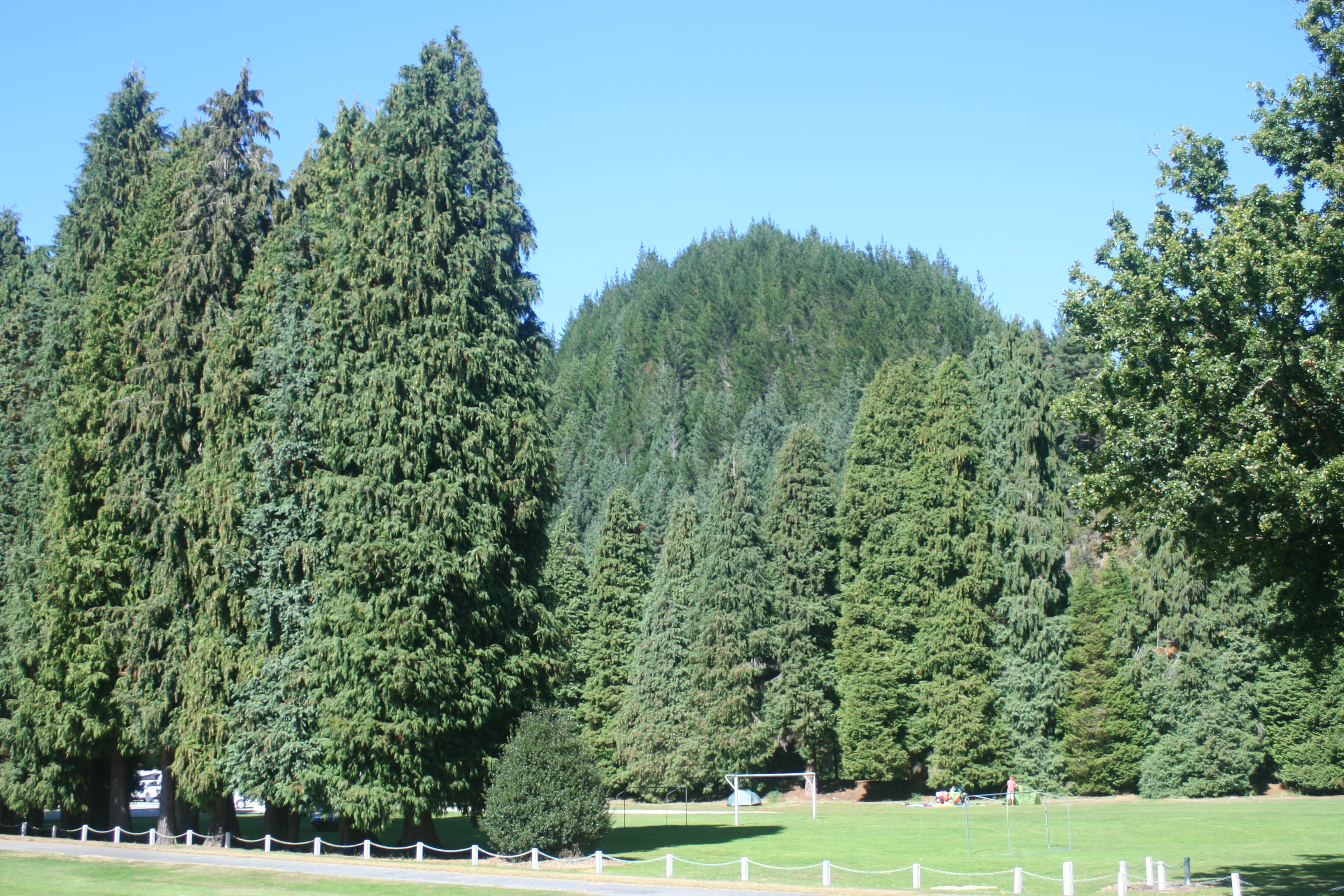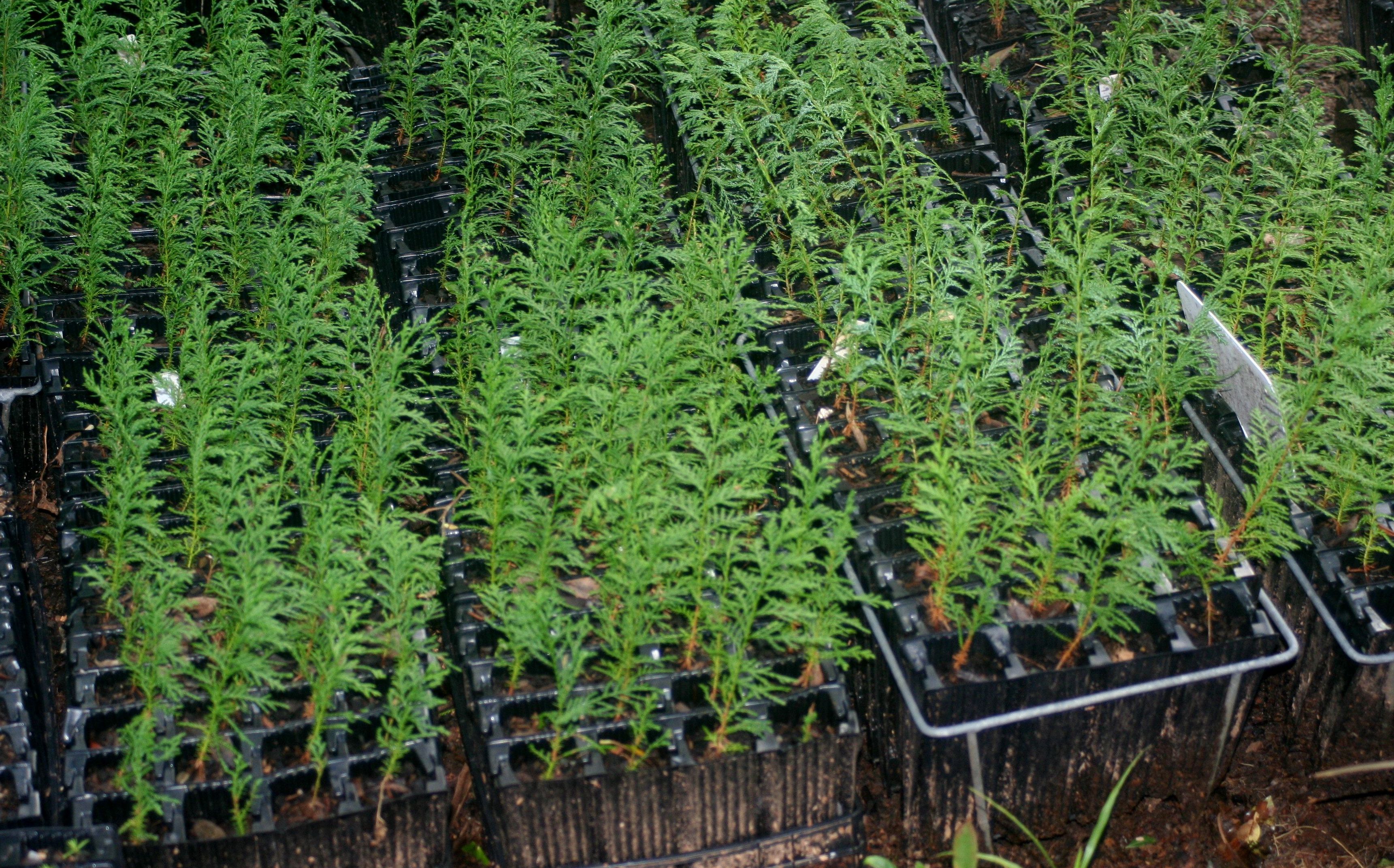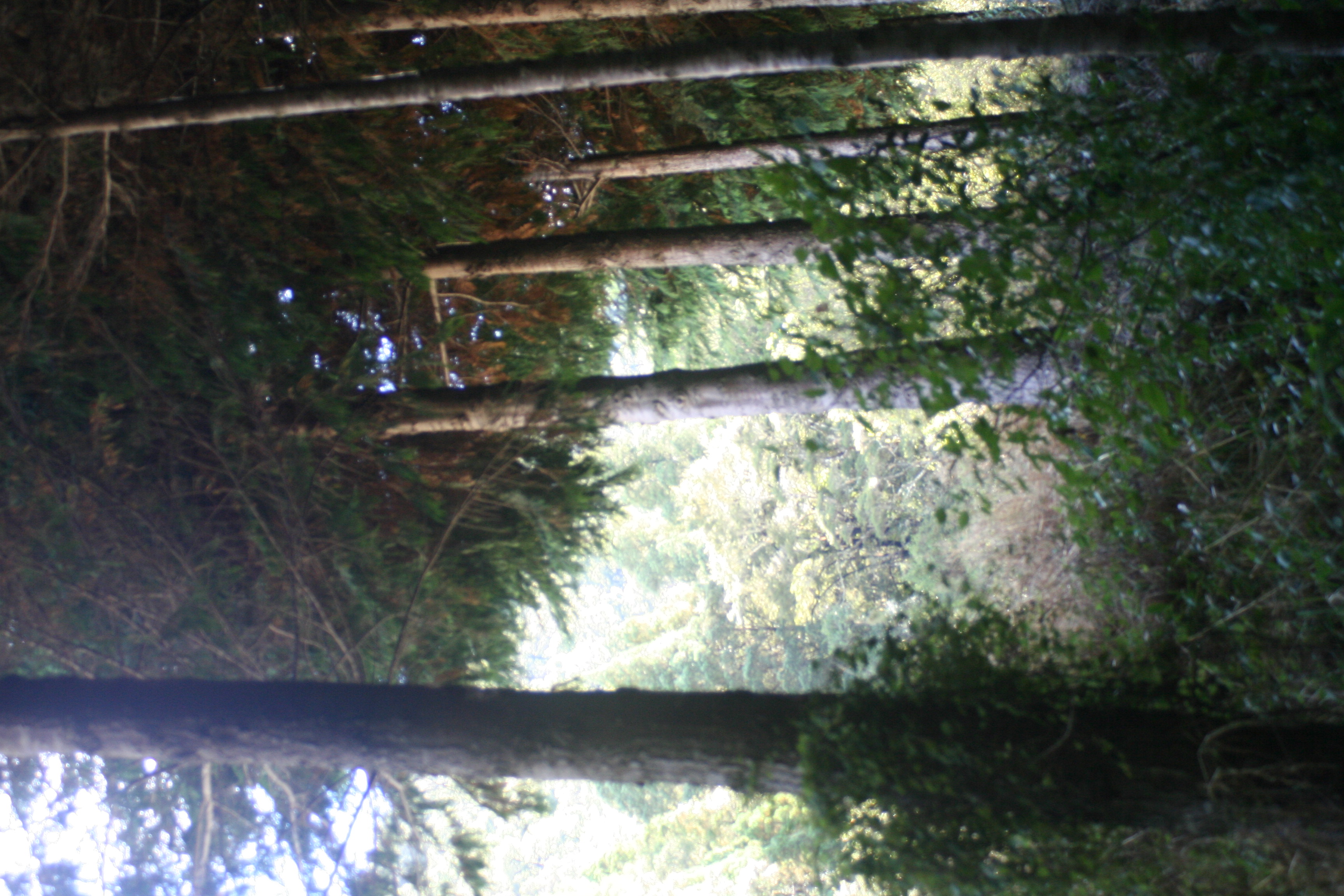
Reefton Domain trees probably from 1870 so 154 years old, into their second century of happy growth.
These are great long term trees for New Zealand. Reefton Domain and many old farm homesteads around rural New Zealand, boast gigantic old Lawson trees at least 100 years old surviving and thriving. Every now and again a local wise sawmiller will spot one being felled and suddenly everyone has nice smelling beams and lintels in their new-builds. "In this space", that is, long term timber trees, there's oaks and redwoods too, and Cryptomerias, all long lived and trying to prove themselves. Chestnut and Walnut would have to be on this list too. But failed candidates in my book include Blackwoods (too weedy, you never get rid of them), and Red Cedars, thrashed by bugs and wind, and a poor imitation of the Lawson. Old Lombardy Poplars get huge but are usually punky, split, and not good for milling; same with giant willows. By contrast rural dwellers often mill old Lawson cypress trees successfully and produce great timber.
Quality Lawson timber is a known quantity.
As my own trees reach harvest or have to be thinned, I can compare all these trees for their timber from a sawmiller and wood worker's perspective. Lawson wood, like macrocarpa wood and Lusitanica, is a pale "hard softwood". Easy to cut, can be well featured, it is strong, bulding timber, needing treatment only if the sapwood is exposed to weather: the heart being solid. A few layers of oil will keep Lawson cypress safe out in the wilds. Linseed oil and weather turn it black which some people like for Scandinavian cladding. Finely milled it is ideal for clothes chests and drawers with its natural insect-repellent scent and stable strength. Some of the West Coast harvested Lawson timber went off to serve as cross-bars on telephone poles in Taiwan, a valuable export niche and further proof of its hardy wood.
The older your log the more heartwood it gets in it. Big old trees in the USA reach 400 years old and the fallen heartwood stays intact on the ground for years. A great wood for homesteading uses, or bush-building, and well known enough to be easily sold as cut boards, used to build your own house, or traded with friends for building materials or labour.
Cypress biofuel advantage over cedar, redwood.
As firewood, Lawson has a lovely incense scent, bright and cheerful. Splitting well with the axe, despite being often called a "cedar", it burns like a cypress, which is good. Because cedar and redwood are great at being fire resistant, those species are not so good for home fuel production as Lawson and the well-loved macrocarpa. You need some of your plantation to have a fuelwood element. Alder, cypress, and hardwoods like oak and eucalyptus are awesome for firewood from offcuts or bendy trees. Thinned Lawsons, and all the trimmed branches make great firewood. It dries fast like pine and burns hot like Macrocarpa. Properly dried, cypress woods are higher temperature producing than both pine and willow.

Nursery Trees at Dialatree
Sturdy When Young
Hard to find in nurseries, it is considered old-fashioned. Yet due to its popular demand as a niche tree, at our dialatree West Coast nursery, we specialise in producing Lawson cypress. Lawson still has its die-hard fans, despite being upstaged since the nineties by the brash, flashy, Leyland cypress, (a distant cousin), which grows very well on the East Coast and in Southland. Lawson does best in the wetter West and the Cold Interior. Hence Murchison, Reefton, Manawatu. As a baby tree it survives well in the nursery and competes well with the other slower growing trees after 18 months to two years, to produce a fine strong tree seedling of 20 to 30 cm tall. They can be planted at any time of year except dry summer. They are prone to drought and caterpilllars when young and losses to both are common in small trees. Summer watering with trace elements is a must. Always summer water your high value forestry trees their first year in the ground. As they grow bigger they get strong enough to shrug off a few caterpillars. It is often seen as a farm forestry shelter belt for sheep or deer paddocks. Companies are already investing in longer rotation trees, mainly Douglas Fir and Redwood trees. With the payment of carbon credits these have become an even better investment.
As we broaden our forestry portfolios, do not rule out the good old Lawson becoming popular again. It may bring our children a great future as they mill it for valuable furniture and building materials.

A pruned Lawson stand in the Buller Gorge mountains
We grow fruit and timber trees in the extreme climate of the South Island. Explore our mail order nursery for organic fruit and forestry trees.
Back to dialatree - and tree blog archive - www.dialatree.co.nz